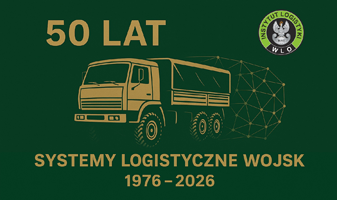ARTYKUŁ ORYGINALNY
EVALUATION OF THE POSSIBILITY OF IMPROVING THE OPERATION OF A TRANSPORT COMPANY IN THE CONTEXT OF THE VEHICLE FLEET MANAGEMENT
1
Wojskowa Akademia Techniczna
2
Wojskowa Akademia Techniczna, Wydział Logistyki, Instytut Logistyki
Data publikacji: 30-09-2018
SLW 2018;48(1):194-215
SŁOWA KLUCZOWE
STRESZCZENIE
The organization of public transport greatly contributes to the proper traffic management policy of vehicles. They are an active element cooperating with the infrastructure. However, the organization of transport is not an easy task. The constantly changing demand on lines characterized by various length and intensity of use makes it difficult to decide on the choice of vehicle. Vehicles with various technical and functional parameters along with a specific frequency of running create an offer for users which is not always adapted to their needs. All the changes affecting the functioning of the rolling stock are reflected in the costs of the communication company. Analysis of the company's operations allows to identify some areas that can be optimized. The savings concern lower fuel consumption by adjusting the capacity and type of vehicle used.
REFERENCJE (10)
1.
PublicTrans 2010, „Zintegrowany transport publiczny w obsłudze miast i regionów” V Konferencja Naukowo – Techniczna organizowana w ramach XXIV KTP, Instytut Technologi Eksploatacji, Radom 2010
2.
Tundys B., Logistyka miejska. Koncepcje, systemy, rozwiązania, Difin, Warszawa 2008
3.
Stużyńska E., Funkcjonowanie transportu miejskiego, Wyższa Szkoła Logistyki, Poznań 2009
6.
Walker J., Human Transit. How clearer thinking about public transport can enrich our communities and our lives, IslandPress, Washington 2011
7.
Wyszomirski O., Transport miejski. Ekonomika i organizacja, Wydawnictwo Uniwersytetu Gdańskiego, Gdańsk 2008
8.
Grzelakowski A., System transportowy jako przedmiot regulacji. Aspekty metodologiczne, Prace Wydziału Nawigacyjnego Akademii Morskiej w Gdyni, nr 24/2010.
9.
Kosobucki Ł., Popyt na przewozy jako determinanta wielkości taboru obsługującego autobusowe linie komunikacyjne, Studia Ekonomiczne. Zeszyty Naukowe Uniwersytetu Ekonomicznego w Katowicach, nr. 143/2013
10.
Oziomek J., A. Rogowski, Zagadnienia synchronizacji linii komunikacyjnych w transporcie publicznym, Logistyka nr 1-2/2016
Udostępnij
Przetwarzamy dane osobowe zbierane podczas odwiedzania serwisu. Realizacja funkcji pozyskiwania informacji o użytkownikach i ich zachowaniu odbywa się poprzez dobrowolnie wprowadzone w formularzach informacje oraz zapisywanie w urządzeniach końcowych plików cookies (tzw. ciasteczka). Dane, w tym pliki cookies, wykorzystywane są w celu realizacji usług, zapewnienia wygodnego korzystania ze strony oraz w celu monitorowania ruchu zgodnie z Polityką prywatności. Dane są także zbierane i przetwarzane przez narzędzie Google Analytics (więcej).
Możesz zmienić ustawienia cookies w swojej przeglądarce. Ograniczenie stosowania plików cookies w konfiguracji przeglądarki może wpłynąć na niektóre funkcjonalności dostępne na stronie.
Możesz zmienić ustawienia cookies w swojej przeglądarce. Ograniczenie stosowania plików cookies w konfiguracji przeglądarki może wpłynąć na niektóre funkcjonalności dostępne na stronie.


